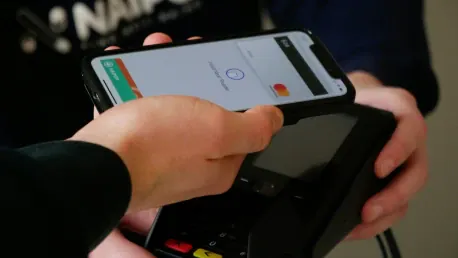Korea’s financial landscape is undergoing a remarkable transformation, driven by rapid advancements in digital payment technologies and proactive regulatory changes. As the nation advances toward a cashless society, key innovations in the industry are fostering greater efficiency, security, and convenience for both businesses and consumers. This article delves into the latest trends and developments shaping Korea’s burgeoning digital payment ecosystem.
Digital Payment Adoption Accelerates
The sweeping adoption of digital payment methods is revolutionizing the way transactions are conducted in Korea. Businesses are compelled to innovate and offer sophisticated payment solutions to meet evolving expectations of tech-savvy consumers. This shift toward digital payments creates an interconnected financial network that enhances customer experience and streamlines transactions. The rapidity of this change is evident as more businesses transition from traditional cash transactions to embracing digital platforms, which provide not just convenience but significantly reduce operational costs.
E-commerce, retail stores, and service industries are increasingly integrating these advanced payment solutions, thus making transactions faster and safer. As digital payments become more prevalent, companies are investing in cloud-based systems for better agility and scalability. The interconnectivity achieved through these platforms enhances the efficiency with which financial operations are managed, leading to better customer relationship management and improved overall service delivery. This transformation is not just confined to urban centers but is expanding into suburban areas, creating a more inclusive financial system that benefits a larger segment of the population.
The Rise of Contactless and Mobile Payments
A significant trend driving this transformation is the increased use of contactless and mobile payment systems. Technologies such as digital wallets, QR codes, and near-field communication (NFC) are becoming commonplace, reducing the need for traditional cash. Collaborations between tech companies and banks are leading to more integrated mobile payment solutions, allowing users to conduct transactions seamlessly across multiple platforms. The widespread adoption of these technologies is not only simplifying payment processes but also enhancing security measures, reducing the likelihood of fraud and theft associated with physical cash.
Businesses are witnessing a surge in consumer preference for contactless methods, chiefly due to the speed and convenience they offer. Digital wallets, such as Samsung Pay and Kakao Pay, have garnered immense popularity, reflected in increased transaction volumes. QR codes have emerged as a versatile tool for various transactions, ranging from buying groceries to making payments at restaurants and cafes. Furthermore, NFC technology is facilitating swift and secured transactions at retail points, adding another layer of convenience for consumers. This shift is being supported by robust customer education programs, ensuring a smooth transition to a cashless society.
Cashless Incentives
To accelerate the adoption of digital transactions, financial institutions and government bodies are introducing various cashless incentive programs. These initiatives, including cashback rewards, loyalty points, and exclusive digital transaction discounts, promote convenience and foster a cashless environment that supports economic growth and digital literacy among consumers. The benefits of these programs are manifold, with consumers enjoying direct financial advantages while businesses witness heightened customer engagement and retention rates.
Government campaigns aimed at educating the public about the advantages of cashless transactions are showing promising results. Various public services now offer digital payment options, making daily interactions more streamlined and efficient. These incentive programs are designed not only to encourage initial adoption but also to sustain long-term usage, ensuring that the societal shift towards a cashless economy is stable and continuous. As a result, digital literacy rates are soaring, and financial inclusivity is improving with greater access to digital payment tools.
Strengthening Security Through Regulation
Given the critical importance of digital transaction security, enhanced regulatory measures are being implemented. Know Your Customer (KYC) and Anti-Money Laundering (AML) policies are becoming stricter to prevent financial fraud and unauthorized activities. Furthermore, Korean authorities are considering the deployment of central bank digital currencies (CBDCs) to upgrade payment systems and uphold financial integrity. The focus on regulation ensures that the digital payment ecosystem remains secure, transparent, and trustworthy for all participants.
Financial institutions are adopting cutting-edge cybersecurity solutions to safeguard user data and prevent breaches. Regulatory bodies are working closely with technology firms to develop and enforce stringent AML policies, thus curbing activities related to money laundering and other illicit financial practices. These measures are crucial as transactions become more digitalized, requiring robust frameworks to maintain trust and integrity in the financial system. Central bank digital currencies are another promising development, with the potential to further streamline and secure digital transactions by leveraging state-of-the-art technology.
Innovations in Point-of-Sale Technology
Retail and service providers are modernizing their operations with cutting-edge point-of-sale (POS) systems. AI-powered payment terminals featuring biometric authentication and voice control are redefining the checkout experience, reducing wait times, and enhancing security for users. Meanwhile, cloud-based POS solutions offer businesses comprehensive visibility and operational efficiency in managing inventory and financial records. The adoption of advanced POS technology is transforming how transactions are conducted, leading to greater customer satisfaction and streamlined operational processes.
Biometric authentication is becoming a key feature in POS systems, offering a more secure way to conduct transactions. This technology minimizes the risk of fraud while providing users with a seamless and effortless payment experience. Voice-controlled terminals add another layer of convenience, especially for visually impaired individuals, making digital payments more accessible. Retailers benefit from these innovations by achieving higher efficiency in managing their inventory, tracking sales, and maintaining accurate financial records, thus optimizing their overall operations.
Future Prospects: AI and Biometric Authentication
Korea’s financial landscape is experiencing a dramatic shift, primarily driven by rapid advancements in digital payment technologies and proactive regulatory updates. These changes are pushing the nation closer to achieving a cashless society. This shift is instrumental in fostering greater efficiency, security, and convenience for both consumers and businesses.
In recent years, digital payment systems in Korea have evolved significantly. Innovations such as mobile wallets, real-time payment processing, and secure authentication methods are becoming increasingly prevalent. These technologies not only enhance consumer experiences but also streamline business operations, making transactions faster and safer.
Furthermore, the government’s role in driving this transformation cannot be understated. By implementing supportive regulations and promoting the adoption of digital payments, the authorities are laying the groundwork for widespread acceptance and integration of these technologies. This article delves into the latest trends and developments shaping Korea’s vibrant digital payment ecosystem, offering insights into how these changes are setting the stage for a more dynamic financial future.









